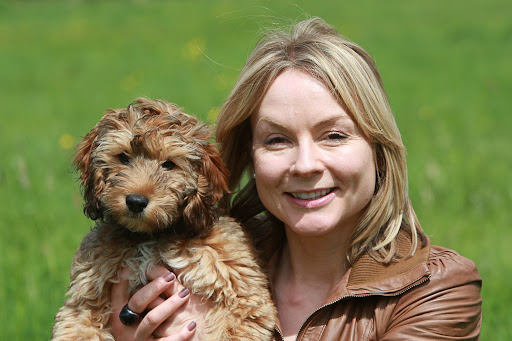The vast majority of dog owners would consider pulling a sickie to care for their pets as they prepare to return to work post-lockdown, new research has shown.
Almost three quarters are worried about how returning to work will affect their pet, the survey revealed.
The poll by leading UK separation anxiety expert and author Julie Naismith is a snapshot of how dog owners are feeling ahead of an anticipated widespread end to working from home as UK bosses plan to boost post-pandemic productivity.
The survey revealed more than 85 per cent of the 900 people surveyed would consider taking time off sick to look after their pets.
Over half, 54 per cent, also said they would consider quitting their current jobs if their employers didn’t allow them to take their dogs to work with them. More than 80 per cent are looking into doggy day-care with a quarter of the remainder believing this is too expensive an option.
Julie said: “You need to send your dog to day-care or a petsitter if you can. Day-care will help your dog remember that there’s more to their world than just being with you.”
Julie, best-selling author of Be Right Back, a guide to overcoming separation anxiety in dogs, said she wasn’t surprised by the survey results and was encouraged to see how much owners love their dogs and put their welfare above other considerations.
Three-quarters of those surveyed had got a dog in lockdown.
And while Julie said she couldn’t condone taking a ‘sickie’ to care for them, she could understand the desperation owners may feel if their pets suffer with separation anxiety.
“Honesty is the best policy,” said Julie. “I’m hoping there are some understanding bosses out there who would appreciate that caring for a beloved part of the family is vital and a frank conversation about this would be better than fibbing.
“The key is to make sure you train your pet to be alone, they can respond really well, my 10-year-old cockapoo Percy is a perfect example of this, he used to be really stressed when I wasn’t around but he is comfortable with it now.”
More than 80 per cent of owners said that faced with a return to working environment, they had invested in dog training in a bid to reduce anxiety for their dog.
Despite this there are people outside of Julie’s research group who believe training your dog to be alone can be cruel. And she says, there are harmful myths about separation anxiety that need to be busted – for the good of both the dog and the owner.
“The thing is, some dogs are really going to struggle. Being alone doesn’t come naturally to dogs. We’ve spent 30,000 years selecting dogs for their desire to be with humans. No wonder so many get upset when we leave. We’ve seen two things happen over the last year – either puppies who never learned how to be alone or adult dogs who used to be fine forgot how to be alone.
“The good news is though that we can still teach these dogs how to handle being alone. Even though you might be in a panic about this you can train your dog to be comfortable when you leave.”
Julie’s expertise has helped thousands of dogs and their owners from around the world overcome this complex behavioural condition.
She said: “People think training a dog to be more comfortable without them is really difficult, it doesn’t have to be.”
Julie’s top five tips for helping your dog overcome separation anxiety:
1 Start by teaching your dog that you coming and going is no big deal. I call this the ‘Door is a Bore game’. You step in and out of the door repeatedly until your dog goes ‘this is silly’.
2 Then start stepping outside for small amounts of time. Watch your dog on camera as you do this. Gradually build up the time and let your dog dictate the pace. The technique we use is the exact same technique we use to help people overcome their fears: Gradual exposure therapy.
3 When a dog doesn’t like being home alone, they’re not being spiteful, they’re not being bad, they’re frightened of being home alone. They have a phobia of it. And that’s why gradual exposure really helps – by exposing them to their fear and overcoming it.
4 Letting your dog ‘cry it out’ is an old training method and it doesn’t work. You have to be more gradual and gentler about it. Crating your dog won’t help either. Most dogs with a fear of being left alone hate being crated.
5 Avoid the many things you might have read about as fixes for separation anxiety. Food toys, calming chews, diffusers, pressure vests, leaving music on and natural remedies just don’t work for most dogs. Stick with training instead.
Yorkshire-born Julie now lives in the Canadian Rockies, and pandemic restrictions permitting, divides her time between the UK and Canada.
Her new book, Be Right Back! The Puppy Separation Anxiety Edition is out now. It follows her international bestselling guide to separation anxiety in adult dogs, Be Right Back!
For more information on Julie’s programmes for owners or for trainers visit: https://www.subthresholdtraining.com/
